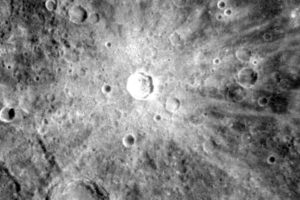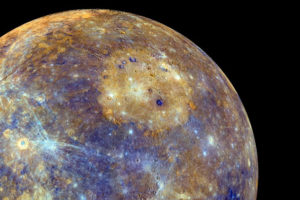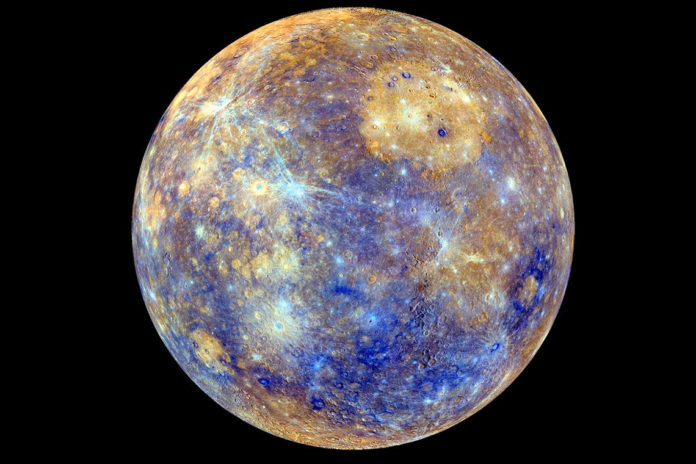Basic Planet Mercury Facts
Mercury is the smallest planet in the solar system. Second, it is the planet closest to the sun. Because Mercury is so close to the sun, it has the shortest and fastest orbit around the sun.
The planet obtains its name from Mercury, the fleet-footed Roman messenger god. The planet has no satellites. Lastly, Mercury is a terrestrial or rocky planet. Terrestrial planets are made from rocks and metals. This results in a hard or rocky surface.
There is no known life on the planet.
Advanced Planet Mercury Facts
Structure of the Planet
Mercury is a terrestrial or rocky planet. The outer crust and mantle of Mercury is solid. In contrast, the core has solid and molten layers.
The crust and mantle are mostly silicate material. On the other hand, the outer core is iron sulfide. Mercury may be 70% metal and 30% silicates.
Meteor Impact Craters

Mercury was bombarded by asteroids soon after it was created. This took place over 4 billion years ago. This event shaped the planet’s surface.
Hundreds of impact craters cover the planet’s surface. The craters were created by meteor strikes. This results in a planetary surface that resembles the Earth’s moon. The largest of these craters is the Caloris Basin which is over 1500 kilometers in diameter.
The light colored rays around Snorri Crater indicate a young impact site.
[Click on the thumbnail images for a full sized image].
Surface Temperatures
The planet has almost no atmosphere. This results in wild temperature swings. During the day, temperatures can rise to 450° Celsius. At night, temperatures drop to as low as -170° Celsius. Day temperatures are very high. However, in polar regions water exists as solid ice.
Geologic Activity

The interior of Mercury is geologically active. The planet’s core is cooling and shrinking. This results in warping of the planet’s surface. This warping results in the formation of large scarps. A scarp is a very steep bank or slope on the planet’s surface.
The Enterprise Rupes Scarp is hundreds of kilometers long. The scarp is evidence that the planet is shrinking. To be precise, the core and mantle cooled and shrank. This caused the crust to buckle and create these scarps.
Polar Regions and Life on Mercury
Although Mercury is a hot planet, its polar region is very cold. The sun does not rise very high at the poles. As a result, ice shaded by the meteor crater walls remain permanently frozen. These ice deposits are relatively thick.
There is evidence of ice and organic materials in some of the planet’s craters. Water and organic matter are the most basic requirements for life. However, no life has been detected.

Basins and Plains
A comet or asteroid impact created the Caloris Basin. This took place over 4 billion years ago.
Today, it is the largest basin on Mercury. It is over 1300 kilometers in diameter. The basin has a double ring.
In addition to impact basins, plains also exist on Mercury. Some plains are located in the impact basins. First, volcanic eruptions filled these basins with lava. Ultimately, the lava flows produced lava plains.
Facts About Mercury
| PROPERTIES | MEASUREMENTS |
|---|---|
| Distance From the Sun | 69.8 million kilometers (aphelion), 46 million kilometers (perihelion). |
| Size | radius of 2.4 thousand kilometers. |
| Mass | 5% that of earth. |
| Gravity | 38% that of earth. |
| Satellites | none. |
| Rotation | 58.6 days (length of a day). |
| Revolution | 87.9 days (time to orbit the sun). |
| Surface Temperatures | 80-700 °K. |
Reflections
Vocabulary
- core
- surface
- terrestrial planet
Notes
- Mercury is the closest planet to the sun. It is the fastest planet to orbit the sun.
- Mercury has a thin atmosphere. This creates large temperature differences between day to night.
- The planet is geologically active.

